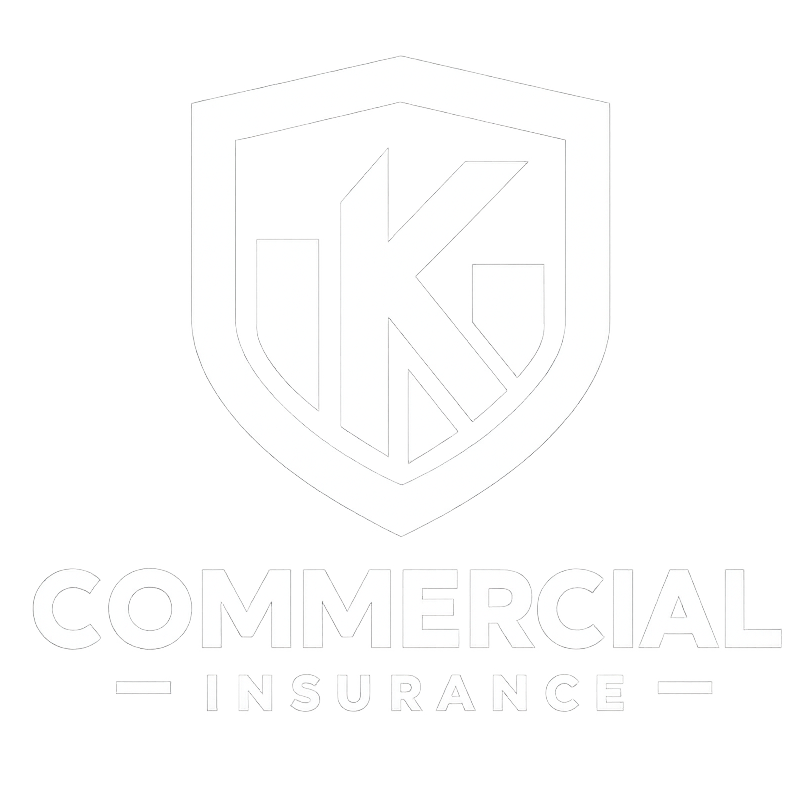Top 3 Recommended Policies

In today's fast-paced world, the demand for home delivery services has skyrocketed. With the rise of e-commerce and the increasing expectation for quick delivery, home delivery trucking has become an essential part of the logistics industry. However, with this growth comes the need for adequate insurance coverage to protect businesses and their assets. This article delves into the intricacies of home delivery trucking insurance, offering insights into its importance, types of coverage, and factors to consider when choosing a policy.
Understanding Home Delivery Trucking Insurance
Home delivery trucking insurance is a specialized form of coverage designed to protect businesses that engage in the transportation of goods directly to consumers. This type of insurance is crucial for companies that operate delivery trucks, as it safeguards against various risks associated with the delivery process.
Why Is It Important?
The importance of home delivery trucking insurance cannot be overstated. As delivery services become more prevalent, the risks associated with transporting goods increase. Accidents, theft, and damage to cargo can lead to significant financial losses. Insurance provides a safety net, ensuring that businesses can recover from unforeseen events without crippling their operations.
Moreover, having the right insurance coverage can enhance a company's reputation. Customers are more likely to trust a business that demonstrates responsibility through adequate insurance. This trust can lead to increased customer loyalty and, ultimately, higher sales. In a competitive market, businesses that prioritize their insurance needs are often viewed as more reliable and professional, which can be a decisive factor for consumers when choosing between similar service providers.
Key Risks in Home Delivery Trucking
Home delivery trucking is fraught with risks that can affect both the delivery company and the customers. Some of the primary risks include:
Accidents: Collisions can occur due to various factors, including driver error, adverse weather conditions, or mechanical failures.
Theft: Delivery trucks often carry valuable cargo, making them targets for theft.
Damage to Goods: Items can be damaged during transit due to poor handling or accidents.
Understanding these risks is essential for selecting the right insurance coverage. Each risk may require different types of insurance to ensure comprehensive protection. For instance, businesses may need to consider cargo insurance, which specifically covers loss or damage to the goods being transported, in addition to general liability insurance that protects against accidents involving the delivery vehicle itself. Furthermore, companies should also evaluate the importance of driver training programs, which can mitigate risks associated with accidents and improve overall safety on the roads.
In addition to these risks, the evolving landscape of e-commerce has introduced new challenges. As more consumers opt for same-day or next-day delivery, the pressure on delivery services increases, potentially leading to rushed operations and higher chances of errors. This shift necessitates a proactive approach to risk management, where businesses not only invest in insurance but also implement robust logistics strategies to streamline their delivery processes. By doing so, they can not only protect their assets but also enhance customer satisfaction through timely and safe deliveries.

Types of Coverage in Home Delivery Trucking Insurance
Home delivery trucking insurance is not a one-size-fits-all solution. Various types of coverage are available, each addressing specific needs and risks. Below are the most common types of coverage that businesses should consider:
Liability Insurance
Liability insurance is a fundamental component of any trucking insurance policy. It protects businesses against claims resulting from bodily injury or property damage caused by their delivery vehicles. This coverage is essential, as it can help cover legal fees and settlements if a business is found liable for an accident. Additionally, many states require a minimum level of liability coverage, making it not only a protective measure but also a legal necessity for operating delivery services.
Cargo Insurance
Cargo insurance covers the goods being transported. This type of insurance is crucial for home delivery services, as it protects against losses due to theft, damage, or other unforeseen events. Depending on the policy, cargo insurance may cover the full value of the goods or a specified limit. Businesses should carefully assess the types of products they deliver, as certain items may require specialized coverage, such as perishables or high-value electronics, which can have unique risks associated with them.
Physical Damage Coverage
Physical damage coverage protects the delivery vehicles themselves from damages incurred due to accidents, vandalism, or natural disasters. This coverage can be further divided into two categories:
- Collision Coverage: This covers damages resulting from collisions with other vehicles or objects.
- Comprehensive Coverage: This protects against non-collision-related damages, such as theft or weather-related incidents.
In addition to these categories, businesses may want to consider the importance of regular vehicle maintenance and inspections, as these factors can significantly influence their insurance premiums. Insurers often look favorably on companies that demonstrate proactive measures in maintaining their fleet, which can lead to lower rates and fewer claims over time. Furthermore, investing in safety training for drivers can not only enhance the overall safety of the delivery operations but also potentially qualify the business for additional discounts on their insurance premiums.
Factors to Consider When Choosing Insurance
Selecting the right home delivery trucking insurance requires careful consideration of several factors. Businesses must assess their unique needs and risks to find a policy that offers adequate protection without breaking the bank.
Assessing Business Needs
Each delivery business has its own set of challenges and risks. Factors such as the size of the fleet, the types of goods being transported, and the geographical area of operation can all influence insurance needs. A thorough assessment of these factors will help determine the necessary coverage levels. For instance, a company that transports fragile items may need additional coverage for damage during transit, while a business operating in urban areas may require higher liability limits due to increased traffic and potential accidents. Additionally, understanding seasonal fluctuations in business can also play a crucial role; for example, a company that experiences a surge in deliveries during the holiday season should consider temporary increases in coverage to match this heightened risk.
Understanding Policy Limits
Insurance policies come with limits on coverage amounts, which can significantly impact a business's financial protection. It is essential to understand these limits and ensure they align with the potential risks faced by the business. Underinsuring can lead to substantial out-of-pocket expenses in the event of a claim. Furthermore, businesses should also be aware of deductibles, which are the amounts they must pay out of pocket before the insurance coverage kicks in. A higher deductible might lower premium costs but could also lead to significant expenses in the event of a claim. It’s advisable to conduct a risk assessment to determine the most suitable deductible that balances affordability with adequate protection.
Comparing Quotes
Once the coverage needs are established, it is advisable to obtain quotes from multiple insurance providers. Comparing different policies can reveal variations in coverage options, limits, and premiums. This process can help businesses find the best value for their insurance investment. Additionally, it is important to consider the reputation and customer service of the insurance providers being evaluated. Reading reviews and seeking recommendations can provide insights into how claims are handled and the overall reliability of the insurer. Some companies may offer discounts for bundling multiple policies or for maintaining a good safety record, which can further enhance the value of the chosen insurance. Engaging with an insurance broker can also be beneficial, as they can provide expert advice tailored to the specific needs of the business and help navigate the complexities of different policies.
The Role of Safety Measures in Insurance Costs
Implementing safety measures can significantly influence insurance premiums. Insurance providers often offer discounts to businesses that demonstrate a commitment to safety. This can include training programs for drivers, regular vehicle maintenance, and the use of technology to monitor driving behavior.
Driver Training Programs
Investing in driver training programs can reduce the likelihood of accidents, thereby lowering insurance costs. Well-trained drivers are more aware of road safety and can handle various driving conditions more effectively. Insurance companies may recognize these efforts and offer lower premiums as a result.
Vehicle Maintenance
Regular maintenance of delivery vehicles is crucial for preventing breakdowns and accidents. A well-maintained fleet is less likely to be involved in incidents, which can positively impact insurance rates. Keeping detailed maintenance records can also demonstrate to insurers that a business takes vehicle upkeep seriously.
Technology Integration
Utilizing technology, such as GPS tracking and telematics systems, can enhance safety and efficiency. These tools can monitor driving habits, provide real-time data on vehicle performance, and help in route optimization. Insurance companies may offer discounts for businesses that leverage technology to improve safety.

Claims Process in Home Delivery Trucking Insurance
Understanding the claims process is vital for any business operating in the home delivery trucking sector. Knowing how to navigate this process can ensure that claims are handled efficiently and effectively.
Steps to File a Claim
Filing a claim typically involves several key steps:
- Report the Incident: Notify the insurance company as soon as possible after an accident or loss.
- Gather Documentation: Collect all relevant information, including police reports, photographs, and witness statements.
- Submit the Claim: Complete the necessary claim forms and submit them along with the gathered documentation.
Each insurance provider may have specific requirements, so it is essential to follow their guidelines closely to avoid delays in processing the claim.
Common Challenges in the Claims Process
While the claims process may seem straightforward, several challenges can arise:
- Disputes Over Liability: Determining who is at fault in an accident can lead to disputes, potentially complicating the claims process.
- Insufficient Documentation: Failing to provide adequate documentation can result in claim denials or delays.
- Policy Exclusions: Some policies may have exclusions that could affect the outcome of a claim.
Being aware of these challenges can help businesses prepare for potential issues and streamline the claims process.
Cost of Home Delivery Trucking Insurance
The cost of home delivery trucking insurance varies widely based on several factors, including the type of coverage, the size of the fleet, and the business's claims history. Understanding these factors can help businesses budget for their insurance needs.
Factors Influencing Insurance Premiums
Several key factors can influence the cost of insurance premiums:
- Type of Cargo: The nature of the goods being transported can impact premiums. High-value or hazardous materials may result in higher rates.
- Driving History: A clean driving record can lead to lower premiums, while a history of accidents or claims can increase costs.
- Location: Areas with high traffic or crime rates may lead to higher premiums due to increased risk.
Estimating Insurance Costs
Estimating insurance costs requires a careful analysis of the factors mentioned above. Businesses can work with insurance agents to obtain quotes that reflect their specific circumstances. It’s advisable to review these estimates regularly, especially if there are changes in operations or fleet size.
Budgeting for Insurance
Budgeting for home delivery trucking insurance is an essential aspect of financial planning for any delivery business. Setting aside a specific percentage of revenue for insurance can help ensure that coverage remains affordable and adequate over time. Regularly reviewing and adjusting the budget based on changing needs will also contribute to long-term financial stability.
Choosing the Right Insurance Provider
Finding the right insurance provider is just as important as selecting the right coverage. The right insurer can make a significant difference in the overall experience, from customer service to claims handling.
Researching Insurance Companies
Conducting thorough research on potential insurance providers is crucial. Businesses should look for companies with a solid reputation, positive customer reviews, and a history of reliable claims handling. Resources such as online reviews, industry reports, and recommendations from peers can provide valuable insights.
Evaluating Customer Service
Customer service is a critical factor in choosing an insurance provider. A responsive and knowledgeable customer service team can make the process of obtaining quotes, filing claims, and addressing concerns much smoother. It’s advisable to reach out to potential insurers with questions to gauge their responsiveness and willingness to assist.
Understanding Policy Terms
Before finalizing an insurance policy, it is essential to thoroughly review the terms and conditions. Understanding the coverage limits, exclusions, and any additional fees can prevent unpleasant surprises down the line. Seeking clarification on any confusing terms is crucial for making an informed decision.
Future Trends in Home Delivery Trucking Insurance
The home delivery trucking industry is evolving rapidly, influenced by technological advancements and changing consumer expectations. These trends are likely to impact insurance coverage and practices in the coming years.
Increased Use of Technology
As technology continues to advance, the integration of tools such as artificial intelligence and machine learning in the insurance sector is becoming more prevalent. These technologies can help insurers assess risks more accurately and streamline the underwriting process, potentially leading to more tailored insurance solutions for home delivery companies.
Focus on Sustainability
With growing concerns over environmental impact, many delivery companies are shifting towards more sustainable practices. This trend may influence insurance policies, with providers offering incentives for businesses that adopt eco-friendly vehicles or practices. Such initiatives can lead to lower premiums and a more positive public image.
Regulatory Changes
As the home delivery trucking industry grows, regulatory changes may occur, impacting insurance requirements. Staying informed about potential changes in regulations can help businesses adapt their insurance coverage to remain compliant and adequately protected.
Conclusion
Home delivery trucking insurance is a vital component of operating a successful delivery business. Understanding the different types of coverage, assessing risks, and choosing the right provider can ensure that businesses are adequately protected against the myriad of challenges they face. As the industry continues to evolve, staying informed about trends and changes will be crucial for maintaining effective insurance coverage.
Investing time and resources into selecting the right insurance can ultimately lead to greater peace of mind, allowing businesses to focus on what they do best—delivering goods to customers efficiently and safely.
Contact Us

